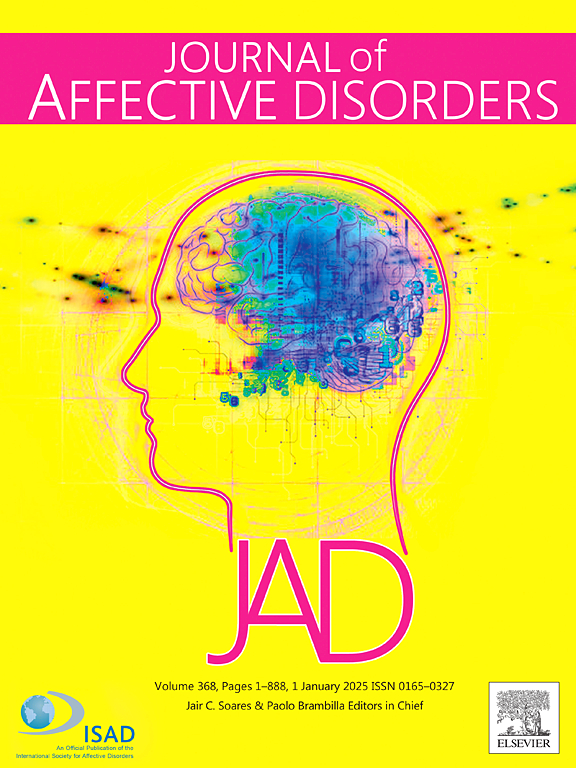The association between C-reactive protein and neuroimaging findings in mood disorders: A review of structural and diffusion MRI studies
IF 4.9
2区 医学
Q1 CLINICAL NEUROLOGY
引用次数: 0
Abstract
Background
Mood disorders, including major depressive disorder (MDD) and bipolar disorder (BD), often share structural brain alterations, which may be linked to peripheral inflammation. In this regard, C-Reactive Protein (CRP) has been associated with these alterations. This review explores the relationship between CRP levels and neuroimaging findings in mood disorders using structural and diffusion Magnetic Resonance Imaging (MRI).
Methods
Following PRISMA guidelines, a systematic search was conducted through Scopus, PubMed, Web of Science, and Embase before September 2024, focusing on studies evaluating associations between CRP levels and structural and/or microstructural brain alterations in mood disorders.
Results
The present systematic review included 20 studies examining the associations between peripheral CRP levels or DNA methylation-based CRP (DNAm CRP) signatures and structural brain alterations in mood disorders. Findings showed considerable variability; however, consistent patterns emerged, linking higher CRP levels to reduced grey matter volumes and cortical thinning, particularly in the prefrontal cortex (PFC), hippocampus, entorhinal cortex, insula, and caudate. Diffusion-based imaging consistently indicated reduced white matter integrity, with significant effects in key tracts such as the internal capsule, cingulum bundle, and corpus callosum (CC).
Conclusions
Overall, these findings suggest that systemic inflammation, reflected by elevated CRP or DNAm CRP, contributes to structural alterations indicative of neurodegeneration and compromised axonal integrity in mood disorders. Discrepancies among studies highlight potential influences of disease severity, treatment history, and distinct inflammatory mediators. Future research employing standardized imaging protocols and longitudinal designs is essential to clarify inflammation's mechanistic roles and identify reliable biomarkers of structural brain alterations in mood disorders.
求助全文
约1分钟内获得全文
求助全文
来源期刊

Journal of affective disorders
医学-精神病学
CiteScore
10.90
自引率
6.10%
发文量
1319
审稿时长
9.3 weeks
期刊介绍:
The Journal of Affective Disorders publishes papers concerned with affective disorders in the widest sense: depression, mania, mood spectrum, emotions and personality, anxiety and stress. It is interdisciplinary and aims to bring together different approaches for a diverse readership. Top quality papers will be accepted dealing with any aspect of affective disorders, including neuroimaging, cognitive neurosciences, genetics, molecular biology, experimental and clinical neurosciences, pharmacology, neuroimmunoendocrinology, intervention and treatment trials.
 求助内容:
求助内容: 应助结果提醒方式:
应助结果提醒方式:


